Imagine strolling through a magical forest, where the trees aid you in crafting your tales. That’s what Artificial Intelligence (AI) brings to the table: an immense power to revolutionize your content creation process. No, I am not referring to robots sitting behind computers and churning out articles. This transformational journey is more subtle and sophisticated as well as less dystopic, all while being incredibly potent because it involves a new set of compelling rules.
Welcome aboard on a fascinating expedition into the mesmerizing world of Artificial Intelligence tailored explicitly for writers!
Introduction to AI Content Writing Rules – Why They Matter
Think back to the blissful days when you first learned to write essays at school. Remember how painstakingly you had to abide by numerous grammar, vocabulary, sentence structure, and coherence rules? These guidelines were crucial bridges that processed your sprawling ideas into readable and compelling compositions.
Now, let’s fast-forward to our current era of information overload and a rapidly changing tech landscape. The way we create written content today has taken a quantum leap, thanks largely to Artificial Intelligence (AI). In this context have emerged certain transformative principles known as AI content writing rules.
As their name suggests, these are not mere add-ons but core regulatory benchmarks that guide machine learning algorithms and the human minds behind them to produce high-quality AI-assisted writing. They’re the backbone influencing how AI tools understand prompts, ingest data inputs, recognize patterns, and eventually weave together words into meaningful content.
Therefore, grasping why these norms influence our present-day digital narration techniques is pivotal. This means embracing the importance of “Garbage in, garbage out” and acknowledging that prompting AI isn’t significantly different from briefing humans. We also need to recognize that the road to quality content runs through comprehensive briefs that provide valuable insights.
It’s time we got acquainted with these rules. Moreover, we need to be more than mere guidelines. Instead, we should operate as allies and enablers, nudging us towards crafting nuanced yet efficient writing regardless of our medium. Because at the end of this day and age, isn’t staying relevant amid change the key to thriving?
6 AI Content Writing Rules
Understanding the ground rules that govern artificial intelligence content writing can be a game-changer for writers, allowing them to leverage this technology effectively in churning out high-quality content. Below, we explore six essential rules within the realm of AI-assisted writing.
Prompting AI and Briefing Humans is the same
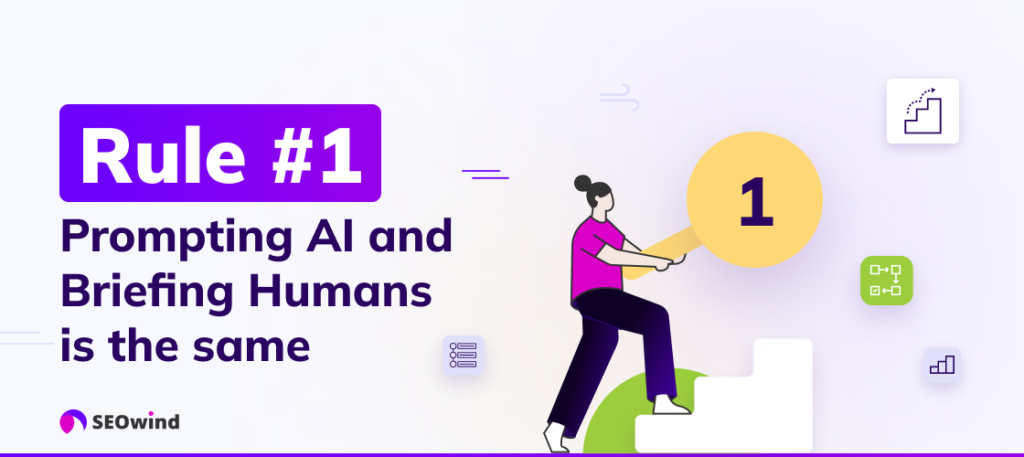
You’d be surprised to learn how AI and humans are similarly directed during an effective content creation process. Much like briefing a fellow human writer, you must guide your AI tool on what you want it to create. Whether man or machine, efficient communication forms the bedrock of sound output. Crystal clear instructions allow your tool to understand context, tone, and objectives better, significantly improving performance.
AI prompting is 1% asking and 99% knowledge feeding.
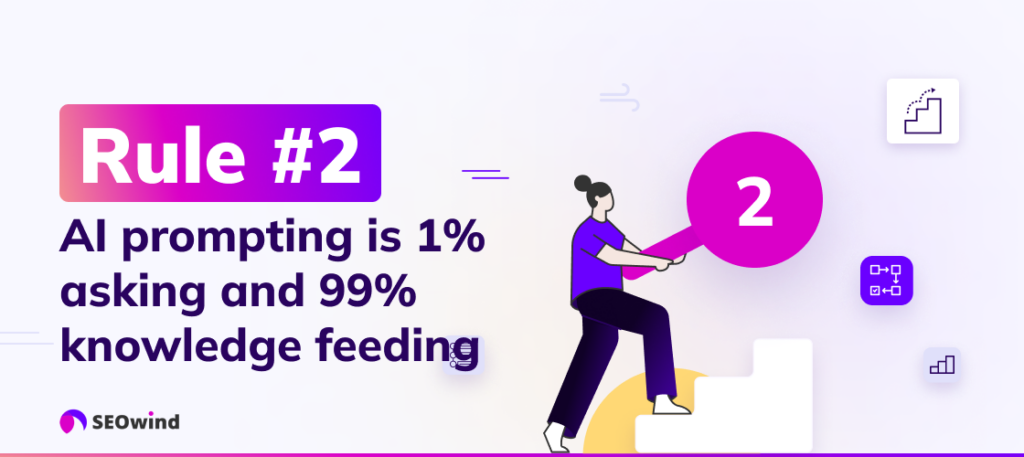
When interacting with an AI system, ‘asking’ it questions technically makes up only a fraction of its use case. The real power lies in using these tools as enormous reservoirs of knowledge. Artificial Intelligence algorithms thrive when they are repeatedly fed information. This allows them to witness patterns over time and generate more accurate responses or predictions.
Garbage in, garbage out! Feed AI with the proper context
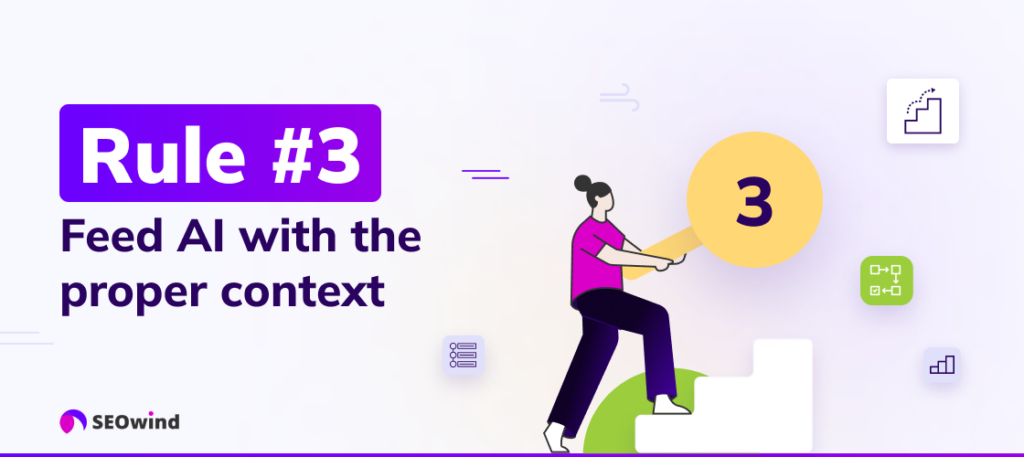
If you feed irrelevant data into your system or if ambiguity dominates your instructions, expect nothing short of gibberish from your AI assistant. Remember that how well your prompts are structured directly determines the generated content’s quality. As such, prompts should encompass all necessary details relevant to the task.
Avoid linguistic shortcuts
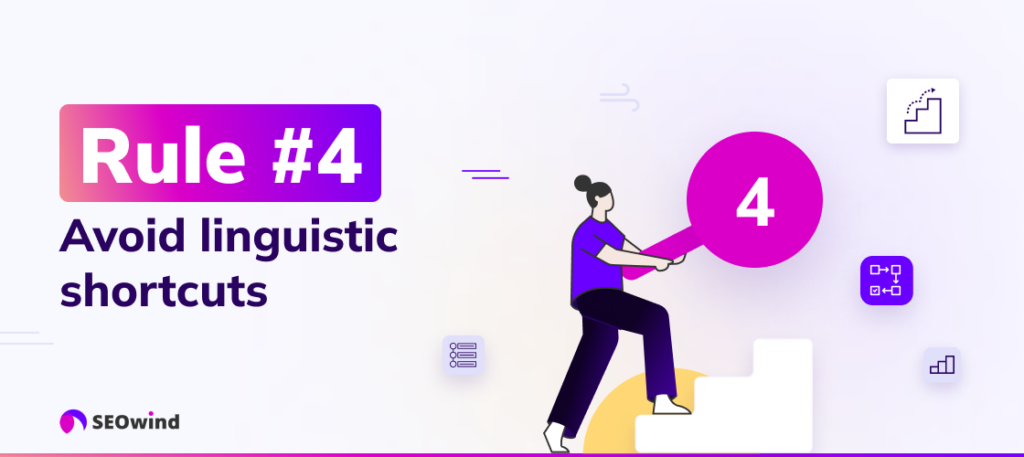
If there’s one thing machines detest (were they capable of emotions), it would undoubtedly be linguistic shortcuts! Unlike humans, who have mastered linguistic nuances through years of interaction, AI often struggles to interpret intricate phrases or double-entendres. You should always supply more explicit communication, ensuring words aren’t lost in translation.
A comprehensive brief equals quality AI content
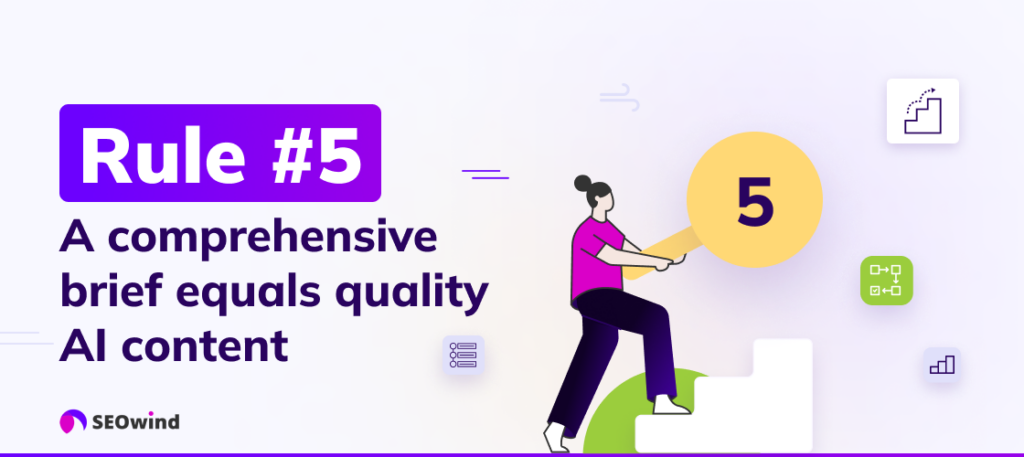
Complete transparency and brevity during briefing pay off incredibly well with AI-assisted writing. Whether regarding target audiences, the preferred format, or relevant keywords, providing all relevant information results in leaps of improvisation in AI-generated content quality.
Combine AI Tools with Human Expertise – go with the CyborgMethod™
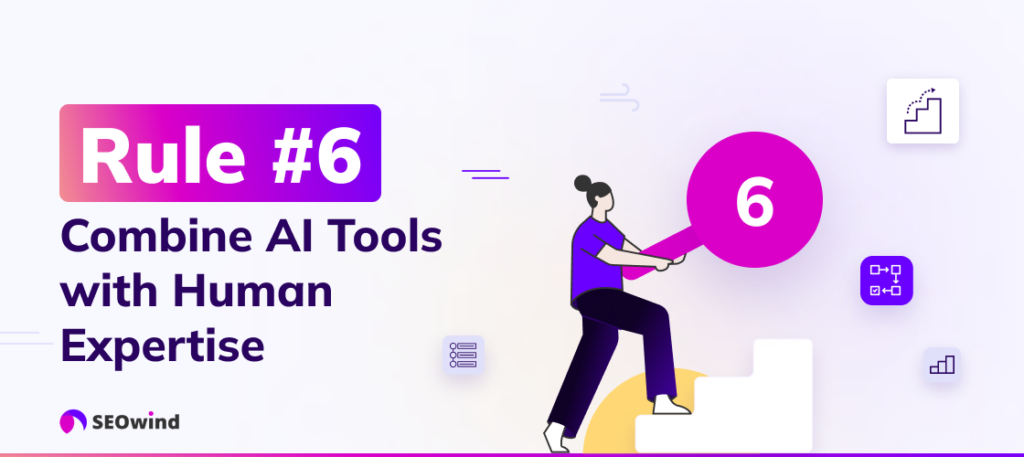
CyborgMethod™ isn’t sci-fi terminology but an effective technique blending human genius and machine efficiency! This strategy denotes the cooperation between a writer’s expertise and understanding of the subject matter and robust artificial intelligence technology to create stellar content pieces that are articulate, original, accurate, and compelling. Leveraging these AI tools enhances your approach rather than replacing your pen entirely, which makes the art all the more intriguing.
Benefits of Using AI for Content Writing
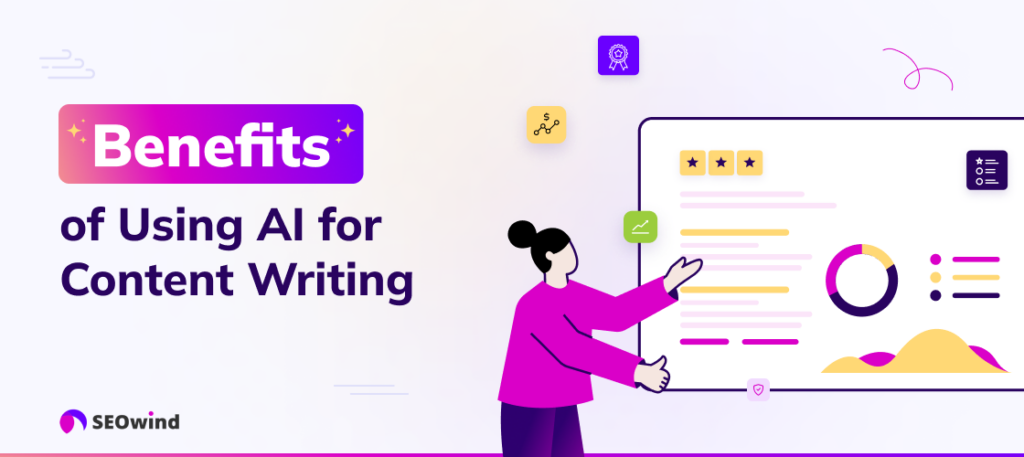
The march towards integrating technology into various facets of our lives is inevitable. Consider content writing, and you’ll discern how this reality is taking shape with Artificial Intelligence. However, can software genuinely replace a human writer’s knack for finesse?
Well, AI content writing rules are not about replacing but rather augmenting human capabilities. Let’s explore some benefits of employing these rules to bolster your creative process.
Improved Efficiency and Productivity
Firstly, upgrading efficiency metrics is the most significant payoff of adopting AI. Having an AI-assisted writing tool equipped with robust algorithms at your disposal drastically increases the speed with which you can generate content compared to traditional pen-to-paper methods or even regular typing.
Think of article outlines, blog drafts, or responses to customer queries. These tasks could be executed in mere seconds with AI! And the improvement doesn’t end with the pace of writing. You also liberate time from your routine activities, which can be invested in strategic or intensive creative work.
It sounds fantastical, but with Artificial Intelligence content writing, expediting tasks while increasing productivity isn’t a far-off dream anymore.
Enhanced Creativity and Originality
A common contention against automation asserts that machines inherently lack creativity. According to this argument, they’re mere instruction-following entities! While there’s merit in this argument concerning full autonomy, remember that we’re talking about assistive technologies here.
Impressively enough, an AI tool offers novel perspectives. It widens your horizon by suggesting diverse angles, breaking free from the potential echo chambers we unknowingly create around ourselves.
Imagine being inspired by ideas spawned by convoluted neural networks trained extensively with colossal data sets. These stimuli spur original expressions, fostering vibrancy in an otherwise monotonous piece. Using AI tools indirectly leads to infusing our writing with innovative ideas and phrasing.
Optimized Content Quality and Accuracy
Finally, quality control is another essential aspect of leveraging AI. With advanced capabilities such as semantic analysis and natural language processing, AI implicitly adheres to content writing rules, ensuring grammatically correct, logically coherent, and generally high-quality output.
Also noteworthy is that these tools can be configured with custom guidelines or style manuals to produce standardized text based on niche requirements. Moreover, they house extraordinary proofreading powers, spotting even the minutest errors a human reader might miss.
The compelling takeaway here? Your messaging will resonate more strongly, leading to a qualitative and accurate delivery to readers.
In conclusion, intertwining technology within traditional workflows represents an evolution worth embracing!
Getting Started with AI Content Writing
Before you dive in, some critical steps are needed to get the most out of your Artificial Intelligence content writing experience. I’ll walk you through these initial stages to ensure a seamless transition to AI-assisted writing tools.
Familiarize Yourself with the Tool’s Features
The first step is gaining a good command of your chosen AI writing tool. AI platforms mainly offer a variety of features designed to automate and streamline the writing process. Irrespective of how advanced the algorithm might be, it won’t yield expected results if used incorrectly.
To make your writing sound better using AI:
- Navigate through all functionalities systematically
- Understand each feature’s purpose and limitations
- Experiment with different functions by running sample tasks.
Acquiring comprehensive knowledge about what your tool can do is the cornerstone for successfully using AI for writing.
Set Clear Objectives and Guidelines
Next, set clear objectives that constitute a roadmap for your machine-learning model. The effectiveness of an algorithm lies in its ability to understand and execute precise instructions.
When setting up guidelines:
- Clearly state desired outcomes – target word count, article format, keyword density, etc.
- Define strict boundaries – potential off-limits topics or taboo words.
- Explain the style – establish formal or informal tone, preferred language complexity level, etc.
Remember that Artificial Intelligence content writing thrives on specificity; minimal ambiguity means maximum output quality!
Edit and Proofread Generated Content
Artificial Intelligence is incredibly sophisticated but falls short of perfection – so always expect some degree of error in its output. Post-writing revisions are crucial to retaining human-like fluidity and coherence within your text since no technology can fully replicate human linguistic nuances.
Henceforth,
- Run at least two proofreading checks focusing initially on grammatical accuracy and then readability.
- Use another pair of eyes if possible – human error can creep in during proofreading.
Ensure Proper Integration of AI-Generated Text Into Your Writing Style
The last step is blending your unique writing prowess with algorithmic assistance. The aim isn’t to wholly replace yourself with an AI tool but to leverage AI so that it seems like you’ve written entire content single-handedly!
Work on customizing the generated text so your signature style and voice remain dominant. Mix AI-created passages in among your manually crafted sections. Lastly, becoming adept at smoothing transitions between those different portions will ensure the creation of a seamless narrative.
Finally, remember that adopting new technology always includes challenges. Over time, though, as you master these steps and find the rhythm in this harmonious human-AI collaboration, starting anew won’t seem daunting anymore!
Potential Challenges in AI Content Writing and How to Overcome Them

As exciting as Artificial Intelligence content writing may be, we must acknowledge that it comes with its share of challenges. If you want to tackle these potential problems head-on, you’ll need to understand them completely.
Potential Biases and Inaccuracies
When using AI for creating content, one possible obstacle that can emerge takes the form of biases and inaccuracies. An intrinsic drawback of AI is that it only absorbs what it has been trained on. If the training data sets contain biased information or errors, they will inevitably surface in the generated text.
An effective strategy for circumventing this concern is carefully vetting your data sources and training materials before feeding them into the AI tool. Also, regularly auditing the output against established standards can help identify recurring biases or inaccuracies. Using diverse sources while teaching your AI can also decrease the risk of harmful biases.
Overreliance on Technology
As wonderful as these advanced tools are, they shouldn’t become crutches that replace human ingenuity entirely. Remember, there is yet to be an AI that matches the full breadth and depth of experience a creative mind brings to content creation.
Adopting the CyborgMethod™ approach ensures a balanced application of human expertise and Artificial Intelligence. Utilize AI-generated messaging to facilitate your efforts, but remember it’s not a complete substitute for human creativity.
Maintaining a Human Touch
The final hurdle worth mentioning is maintaining a genuine human touch amidst stringently governed AI content writing rules. The risk of automated content creation is that you’ll end up with mechanized, robotic-sounding content lacking personality.
To keep your write-ups warm and engaging, I recommend infusing them with personal anecdotes, stories, or metaphors. Even the best AI platforms still struggle with portraying these elements genuinely. Additionally, proofread your content from the point of view of the reader to ensure it resonates with them. Leveraging AI doesn’t imply discarding human wit altogether.
Ethical Considerations in AI Content Creation
Navigating the new frontier of AI content writing is about more than just mastering technology or following rules to make your writing sound better using advanced tools. It’s equally essential to address ethical considerations arising from the use of Artificial Intelligence to produce written material. In this section, let’s cover some key ethical issues surrounding AI-generated writing and discuss how to approach them responsibly.
Avoiding Plagiarism and Copyright Infringement
Foremost among these concerns is plagiarism and copyright infringement. Just as a human writer wouldn’t dream of stealing another author’s work, an ethically-made AI should also respect original creations. This adheres to one of the fundamental AI content writing rules: “Originality serves as the backbone of good quality content.”
People often overlook it, but any form of copy-pasting constitutes copyright violation, even if done inadvertently by software. To avoid this, ensure you work with reliable AI assistants that guarantee complete originality in their content.
Furthermore, perform strict checks for duplication against an internet database or previously generated internal documents before publishing any piece composed by auto-writing tools. Remember, no matter how handy these tools may seem, entering copyrighted materials as input won’t justify bypassing existing laws.
Ensuring Transparency and Disclosure
Another point of distrust between writers and readers is transparency and disclosure, particularly when Artificial Intelligence is involved.
Your audience has a right to know when they’re engaging with AI-generated content. Think of it like clearly labeling ad placements or sponsored posts. Disclosure respects readers’ autonomy, allowing them to react accordingly.
Existing norms heavily favor undisclosed usage, which poses little threat while operating inside lawful boundaries. But adopting an open-book policy never goes out of style, especially when technological advancements keep altering societal dynamics.
Respecting User Privacy and Data
Last but certainly not least is respecting user privacy and data. As we engage more online, our digital footprints expand, making privacy a pressing concern across all industries.
When considering leveraging AI for writing projects, consider where you get the information that goes into these systems and how it’s utilized. AI tools that respect user privacy ensure secure encryption processes to protect sensitive data while strictly complying with rules imposed by the General Data Protection Regulations (GDPR).
Remember, dubious methods in treating confidential data may easily violate ethical boundaries besides threatening legal entanglements.
In an age when Artificial Intelligence content writing is quickly gaining traction, maintaining an unwavering commitment to honesty brings us closer to harnessing its potential without diminishing our integrity as writers or users. After all, technology exists to better human efforts, not overshadow them.


